Effective facades cleaning – from plaster to metal
If the exterior of a building is maintained this helps retain or increase its value. Various methods are available to clear dirt from facades. But the surface should be taken into consideration when applying the respective technology. This is essential for avoiding damage. An overview about techniques and regulations.
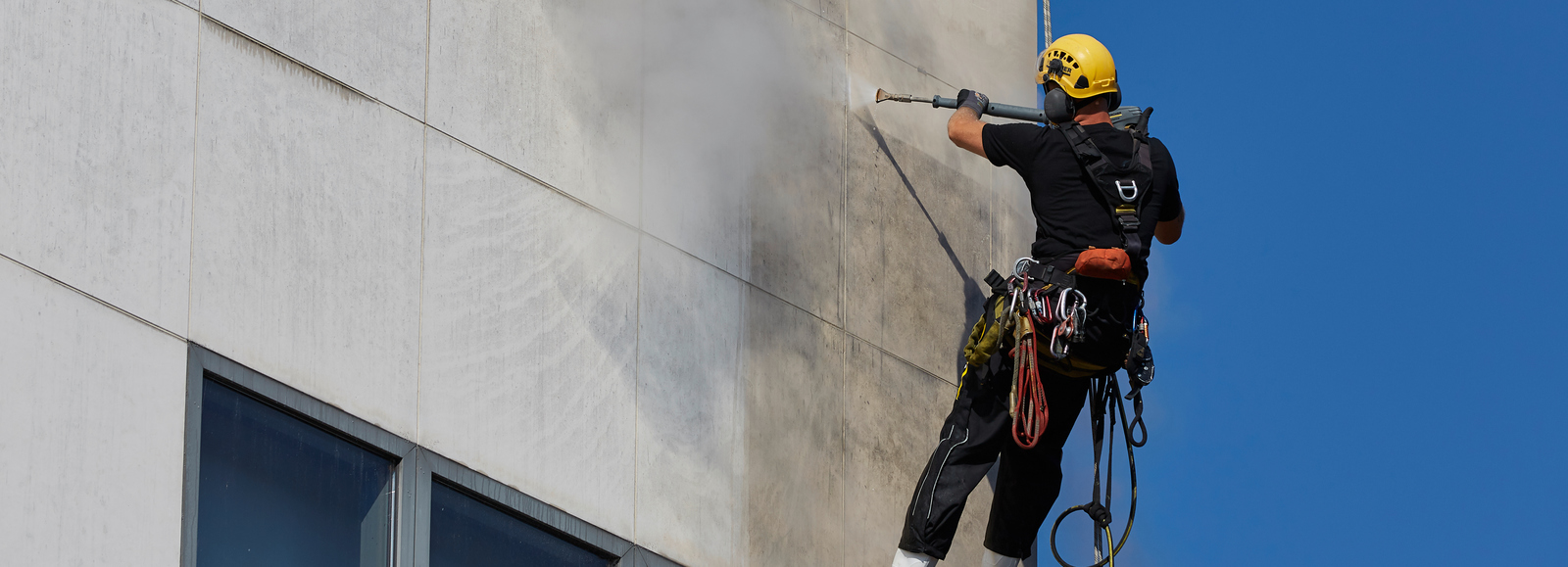
The standard: Cleaning with hot water and steam
Facades are the flagships of buildings. Often they are large, complicated surfaces made of different materials. Exposed to external environmental influences for years, dirt can settle and accelerate weathering in different ways.
Hot water high-pressure cleaners have proven an effective, economical method in facade cleaning due to their high cleaning performance by low water consumption. With trailer based variants even self-sufficient working, independently of electricity and water network, is possible.
The advantages of hot water high-pressure cleaners compared to cold water high-pressure cleaners are based on two aspects:
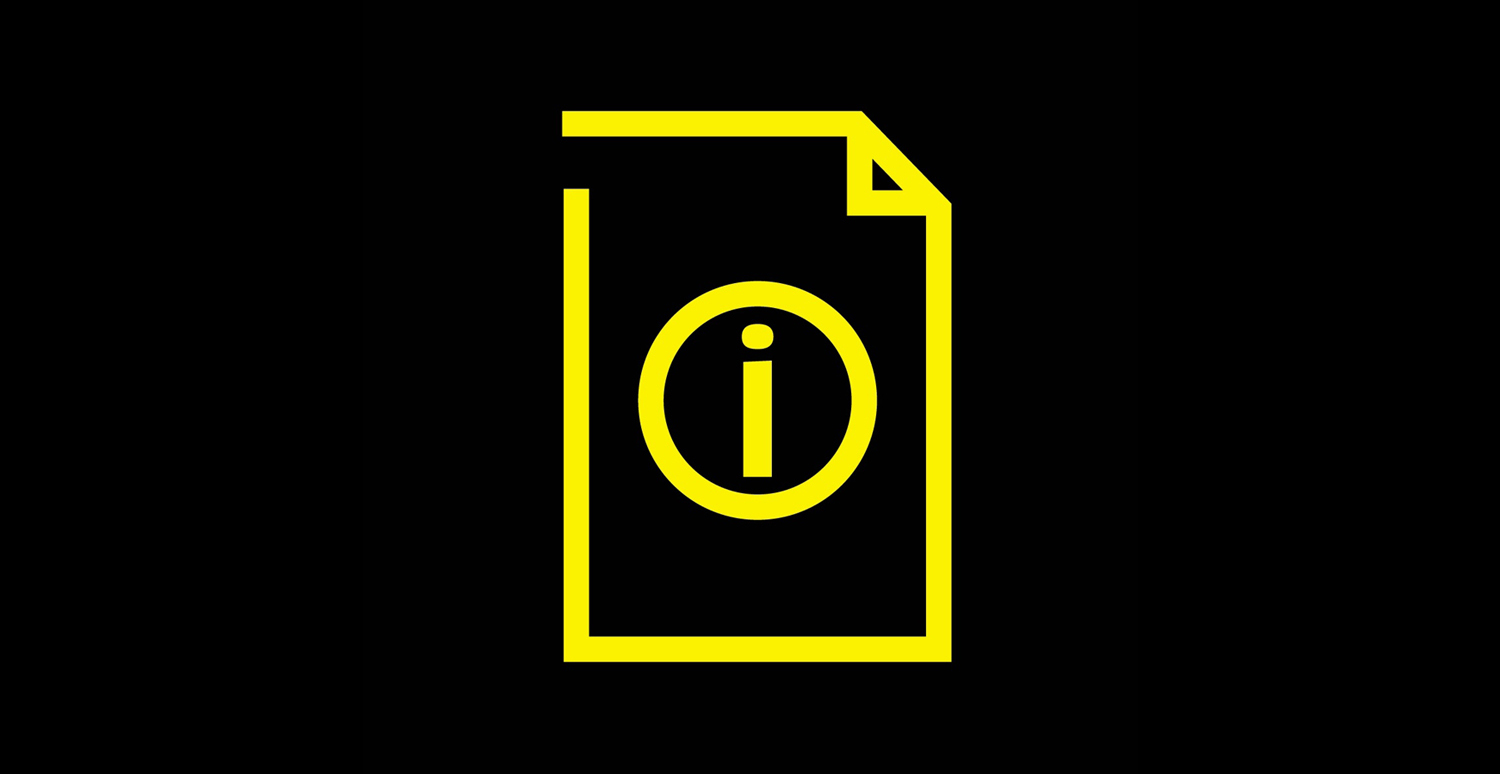
A preliminary test is wise:
Choose the right technology, avoid damage.
No matter which facade material is present – in order to select the correct technology, in each case a sample area should be tested extensively beforehand. Is the facade sensitive to acids, does it absorb water? Which cleaning agent achieves the desired effect in which concentration and time? Those who proceed carefully in advance achieve the desired result and avoid loss of substance or substance removal or other permanent damage due to the incorrect cleaning agent.
It's all about the material: Cleaning of different facade types
Enhanced effect due to cleaning agents
A cleaning agent can further enhance the effect of a high-pressure cleaner if required. The so-called two-step method is recommended in the application. Here the cleaning agent is applied first, it is then washed off at high pressure after the application time. However, when selecting the cleaning agent both the quality of the surface and the statutory provisions should be observed.

Know what's right:
Requirements and regulations.
Facade cleaning always takes place in the public arena meaning it is important to obtain information about the requirements and regulations which vary from place to place and from country to country. Wastewater discharge is subject to approval in each case. If it is only dirty water, the water can be discharged after filtration. The solid materials collected must be disposed of. If a cleaning agent was used, the water must be collected, filtered and neutralised. Also with regard to the use of spray agents, the occurrence of dust, noise or exhaust gas, the corresponding regulations must be observed.
For special cases: Particles and dry ice
Particle and dry ice blasting are welcome alternatives to high-pressure cleaning. Especially if facades are not to be watered too much or water-saving methods are required. They are also good alternatives to high-pressure cleaners if no cleaning agents should be used or there's a limit for wastewater volume. Both proceedings, particle and dry ice blasting, are also appropriate for removing severe contamination, for example graffiti.
Particle blasting
With low-pressure particle blasting a jet gun is supplied with compressed air via an industrial compressor. In addition, a very fine, soft spray agent and water are added to the air in the mixing chamber for dust-binding work. An important factor in the selection of the spray agent is that its Moh hardness and the grain size must be individually selected for the contamination and the original façade surface. The mixture of air, water and spray agent emerges at the nozzle of the trigger gun, whereby air pressure, water volume and spray agent volume are individually adjustable. Surfaces with minimal abrasion can be cleaned in this manner.
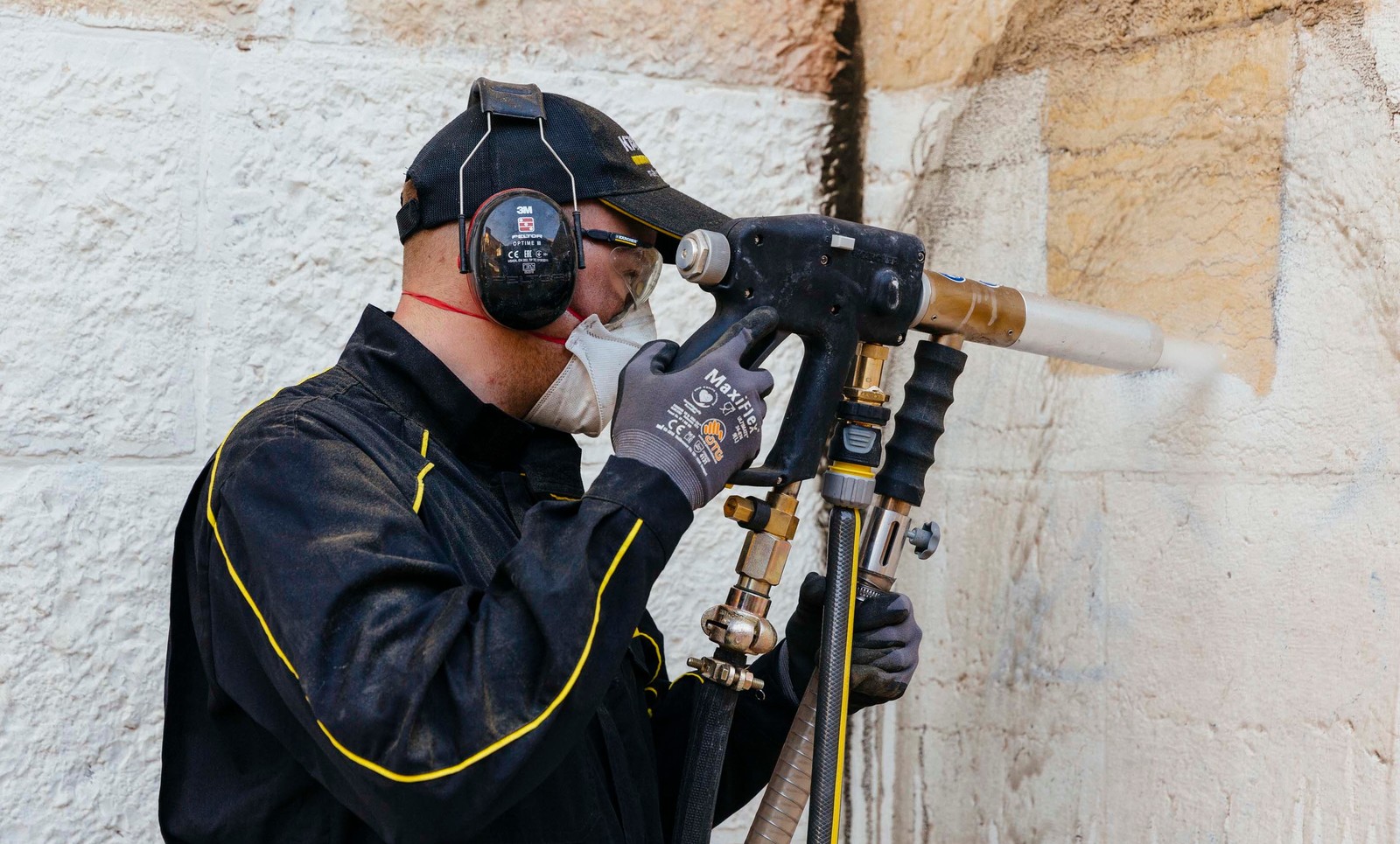
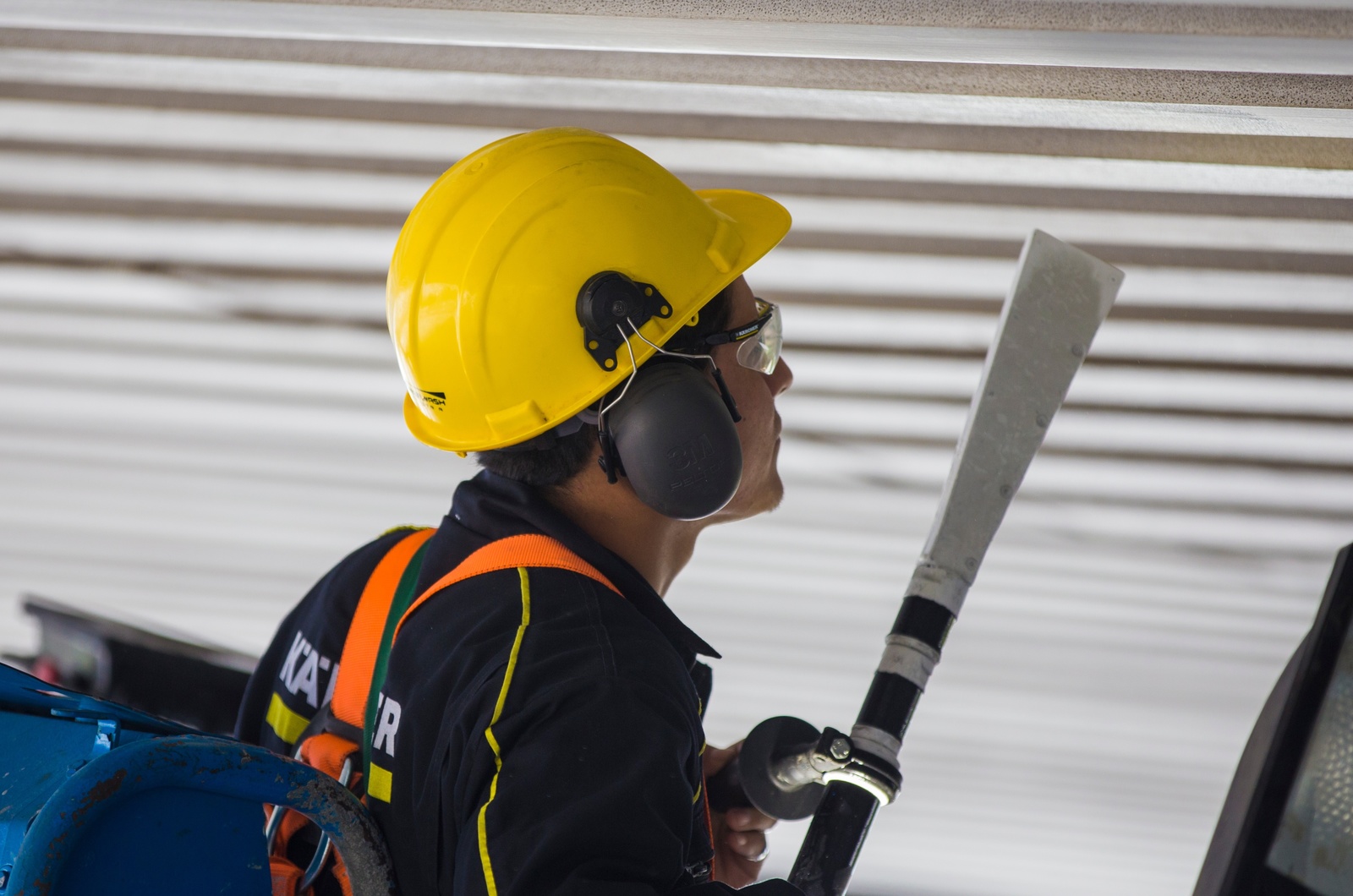
Dry ice blasting
For dry ice blasting a blaster, which injects the ice pellets into an air blast unit, as well as a spray hose with trigger gun and nozzle, via which the air-ice mixture reaches the surface, are required. A compressor with sufficient air pressure and airflow rate is also needed. The mechanical energy is decisive for the cleaning performance.
The dry ice pellets, which have a low Moh hardness (1-2), can be shot onto the surface at a high speed of 150 m/s. This is supported by thermal energy – especially for warm surfaces such as injection moulds – when the frozen CO2 strikes at a temperature of -79° C. As a result, the dirt becomes crumbly and brittle so that it can be easily removed.
With the barely abrasive method oil, grease, adhesives or binding agents can be removed from various surfaces, sensitive surfaces can be cleaned or paints can also be removed from metal without causing any damage.


You may also be interested in:
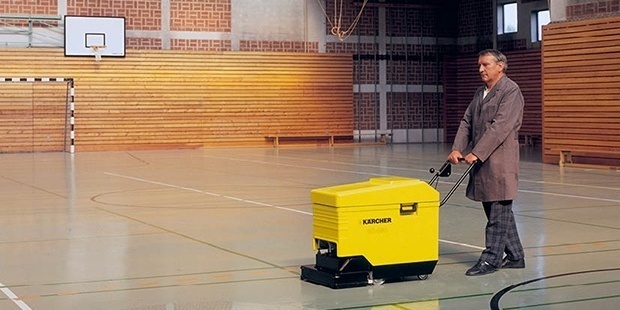
The success story of the scrubber machine
The start of floor-cleaning by machines dates back more than 100 years. The first floor polisher was developed at the start of the 20th Century to take the monotony out of tedious work.









